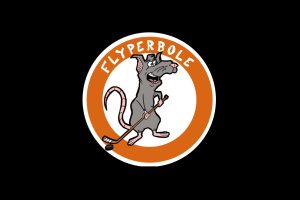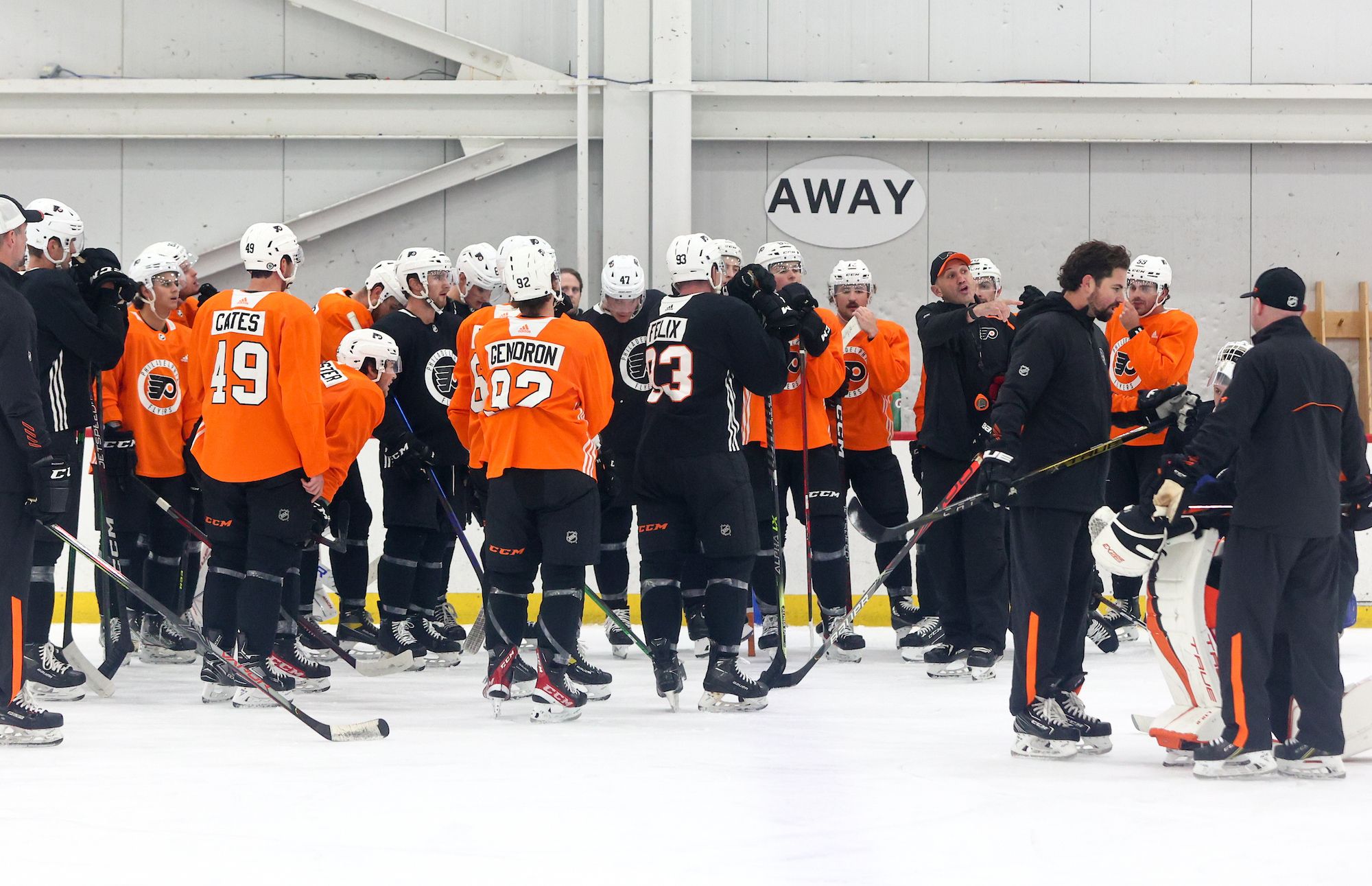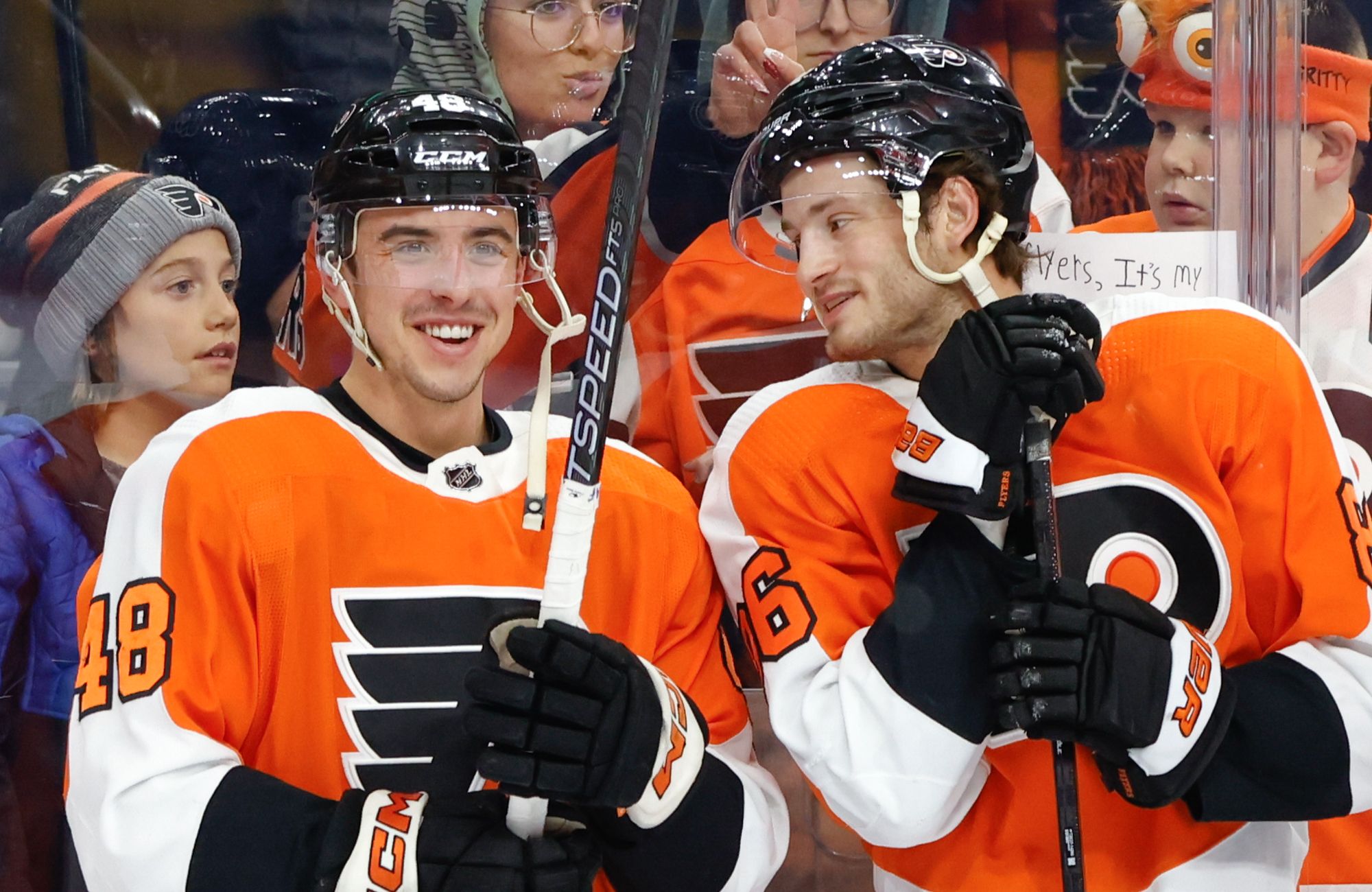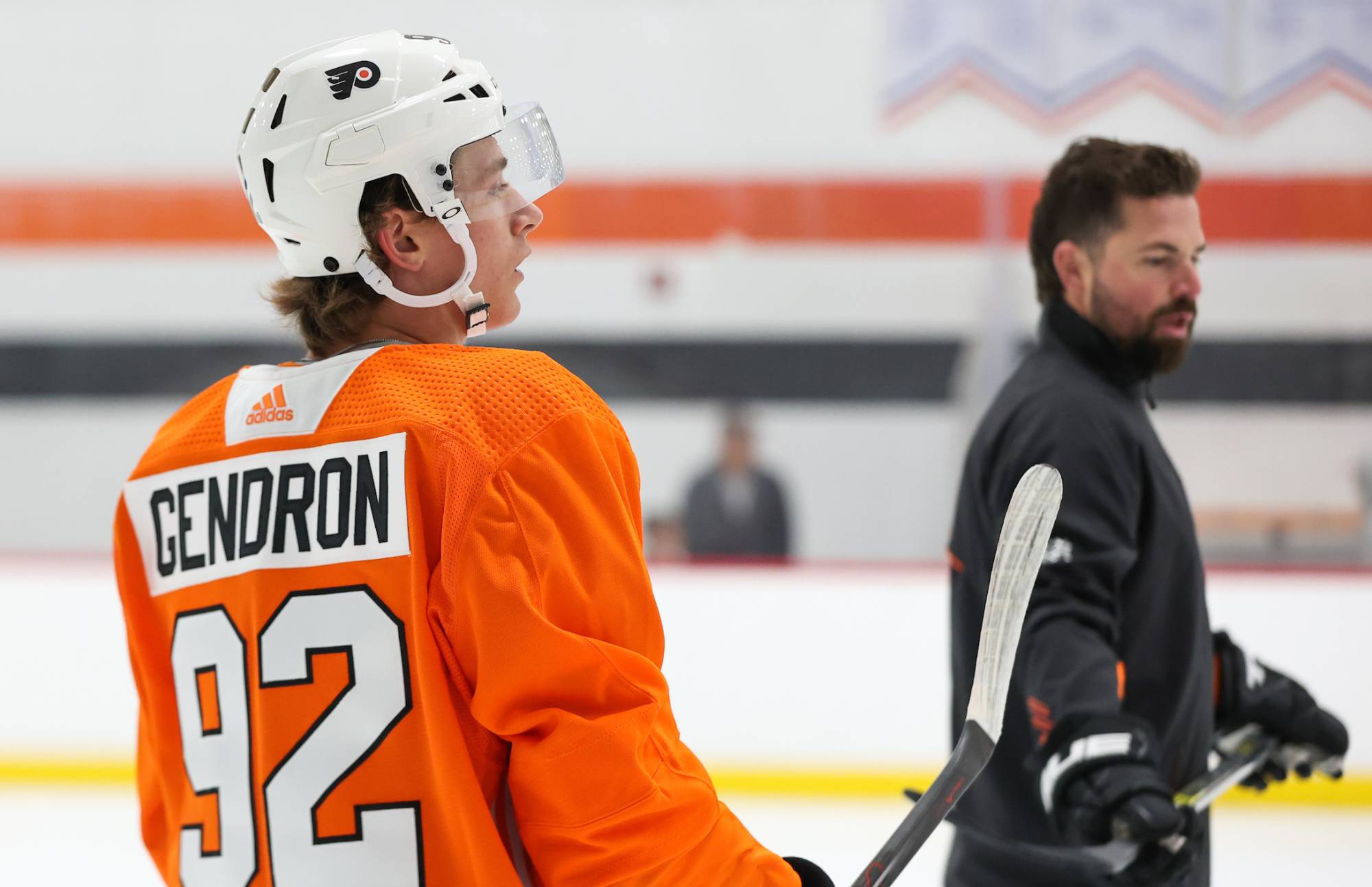On Tuesday, we talked about the things we really liked about Ron Hextall’s first year as general manager of the Philadelphia Flyers. We talked about his drafting, his tendency towards smaller contracts with upside, and the excellent value he was able to get back in most of his trades. Those are nice things.
Today we’re not going to be as nice to Ron Hextall, and will be talking about the things he did this year that we didn’t like, zeroing in on three moves in particular that go against a lot of the good things Hextall did this year. Moves that could raise red flags about his ability to make good personnel decisions moving forward, basically.
Let’s jump right in.
***
The curious Nick Schultz extension
One of the things we liked this year was how Hextall got value out f guys on one-year deals. Nick Schultz, Michael Del Zotto, and Carlo Colaiacovo were all adequate third-pair guys that weren’t paid much. Seeing how well that worked out, you’d hope that this is how the team would look to fill out its third pair until the team had young guys ready to take over those roles.
Which is what made it all the more confusing that Hextall elected to give Schultz, who will be 33 next fall, a multi-year extension back in February. It’s, in a few ways, the exact opposite of that.
In a vacuum, Schultz’s contract was not that bad. His play this season, while overrated by some, was at the level of a fine third-pair guy. There were times where he looked better than that, and times where he looked worse. And while $2.25 million per year is a slight overpay for the 33- and 34-year-old seasons of a third-pair defenseman, it’s unlikely this deal by itself is the one that will make the Flyers’ cap woes bubble over.
And no, it’s not as bad as some of the deals this team has given third-pair defensemen in recent years (though, that’s a pretty pretty low bar to clear, and as we discussed back in March, the solution to having too many overpaid third-pair defensemen is not to go and extend another third-pair defenseman).
But as always, we aren’t operating in a vacuum, and my concerns here are less about the deal itself and more about what the deal says about Hextall.
Nick Schultz just had what legitimately may have been the best year of his career as an NHL defenseman, or at the very least his best in a number of years. He did this at the ripe age of 32 years old. As inspiring as that is, it’s a lot more likely that Schultz’s play falls off a bit over the course of this deal than it is that he maintains or improves on what he did this year.
Was it necessary to lock that up in February? In a season where, largely due to concerns regarding a stagnant salary cap, teams weren’t signing many in-season contract extensions, did the Flyers — a team that already had as much money on the books against its 2015-16 cap as almost anyone else in the league — really need to prioritize this kind of a deal? Especially given everyone who’s going to need an extension in that summer of 2016? Were there really going to be any teams lining up to pay Schultz in free agency this summer?
Kevin wrote last year about how the Flyers have, for years now, opted to give their third-pair spots on defense to veterans over younger players. Those third-pair minutes are good ones with which to ease rookie defensemen into the NHL. The worry here is that signing Schultz means one of the following two things: either that pattern of experience over youth on the third pair will continue for a couple of years under Hextall, or that the Flyers expect Schultz to play top-4 minutes for some or all of this deal. Neither of those would be good things.
So while, by itself, “two years at $2.25 million per year for Nick Schultz” isn’t a ridiculous deal, it’s what that deal represents that worries me a bit here. Death by a thousand paper cuts, and all that.
Schultz was fine this year. But it’s OK to let guys who are just fine to walk, especially when those guys are 32-year-old third-pair defensemen. Re-signing Schultz in February just seems like it’s a sign of a GM prioritizing the wrong people at the wrong time.
Now, while I didn’t like the Nick Schultz extension, I understand how and why it happened. By comparison …
* * *
The inexplicable Zac Rinaldo extension
… I have absolutely zero clue what the explanation was for Ron Hextall giving Zac Rinaldo a two-year contract extension, last September, before the season had even begun.
Zac Rinaldo has played in 223 regular-season NHL games. What we’ve seen in that time has given us every reason to believe he is not a good NHL forward and probably never will be. This was true last offseason, at the time Hextall gave him the extension, and it’s only become even more evident now after another season in which he offered basically nothing offensively or defensively and committed more penalties than he drew.
His only NHL-level skills are his skating and (when legal) his hitting. While these things can make him fun to watch for fans, they don’t change the fact that Rinaldo is, at one hundred percent absolute best, a below-average fourth-liner (no matter how many times we’ve hoped he’d become something more, only to be let down).
 Must Read
Must Read 
Again, like with Schultz, the issue with this contract isn’t the money itself. Rinaldo’s extension wasn’t worth any more than your average fourth-liner’s deal, and if necessary he can be buried in the AHL with no cap penalties at any time. This contract has almost zero chance of crippling the Flyers in any meaningful way.
No, the issue here is this: why on earth is Zac Rinaldo getting a contract extension, ten months before he was set to hit restricted free agency?
Fourth-line forwards are, generally speaking, replaceable. Fourth-line forwards who aren’t very good NHL players are entirely replaceable. They are typically not guys you need to extend a year before their deals run out. So why did Ron Hextall give Zac Rinaldo this deal?
Maybe he sees Rinaldo as a legitimate key member of this team. Maybe he does just see Rinaldo as a good fourth liner, but important enough of one to re-sign almost a year in advance. Maybe he knows Rinaldo is still far off from being a positive contributor at the NHL level, but thinks he’s going to get there. Maybe he signed Rinaldo this past fall, expecting him to take a big leap forward this year.
There are a lot of possible answers. Unfortunately, all of those possible answers are a bit concerning, in terms of “is Ron Hextall evaluating players the wrong way?” and/or “is he prioritizing the wrong kinds of players?”
Maybe after the poor year Rinaldo just had, Hextall changed his mind, learned a thing or two from this mistake, and we won’t see another one like it (and we won’t see Rinaldo) in the near future. But in the meantime, there literally aren’t any good explanations for this move, and that’s worrisome.
* * *
The Umberger-for-Hartnell trade
The final questionable Hextall move that we’ll discuss was Hextall’s first big move as Flyers GM, and is probably the one that’s been discussed the most this year: trading Scott Hartnell for R.J. Umberger and a fourth-round pick in this year’s draft.
Let’s start with the obvious: Trading Hartnell out for Umberger made the Flyers a worse team this past year, and maybe significantly so. Umberger struggled mightily from the outset, and despite a hot streak here and there, he never seemed to fit in anywhere in the lineup. He finished with just 15 points in 67 games and had terrible possession numbers. Hartnell, meanwhile, put up 60 points in 77 games with Columbus and was generally very good.
Hextall (and, if you believe Hartnell himself, maybe Craig Berube) voluntarily swapped out a productive top-9 winger for a non-productive forward and it left them worse off on the ice. I don’t believe that’s a controversial statement in the slightest.
 Christopher Pasatieri/Getty Images
Christopher Pasatieri/Getty Images With that said, the question about this trade is how much of it was made with an eye toward the future.
The argument in defense of this trade for Hextall and the Flyers is basically as follows: Umberger’s contract runs out in 2017-18, two years before Hartnell’s does. The Flyers aren’t going to contend for a Cup in the next couple of years anyways, and odds are that Hartnell — an aging power-forward type who plays a physical game and could fall apart at a moment’s notice — will probably not be worth his pay grade during those last two years of his deal. Given that, it made sense to get rid of him and his cap hit, even if it hurts the team for now.
And I get that argument. I really do. There’s logic behind it. But as much as I believe that Ron Hextall took over this position with the long-term in mind, and as much as I believe that he’s willing to be patient with this team, I just have a hard time buying that his motive behind making that trade — at least, his primary motive — falls in line with that argument.
If the defense of trading an obviously superior player for an inferior one for the sake of cap space in 2017-18 and 2018-19 is “we aren’t going to be good for the next three years anyways”, then it’s basically implied that that’s what Hextall believes.To which I say this:
Do we really, really think that Hextall went to Ed Snider, ready to make his first trade as general manager of the Flyers, and said “let’s do this trade that’s going to make us obviously worse for the next two or three years, because this team isn’t going to be good enough in that time anyways and it will help us a bit in 2018 and 2019?”
I think that cap savings in 2017, 2018 and 2019 were part of why Hextall did the deal. It’s true that Hartnell is probably not going to be very good come 2017, so there’s benefit there. But I also think that Hextall thought that the gap between Hartnell and Umberger as players was a lot smaller than everyone wants to believe he thought it was.
Hextall himself said that he thought Umberger could make up for Hartnell’s scoring. That did not come remotely close to happening. He said he made the trade because the team “wanted to get quicker up front” and called Umberger “a good penalty killer who skates well”. Whereas, in reality, Umberger’s skating was poor all year and he made the team’s penalty kill actively worse. And I think that he also saw Umberger as more disciplined and less prone to bad penalties than Hartnell, which … is correct. Hey, a positive!
Still, my point is this: though salary cap considerations were surely part of why the deal was made, I think Hextall made the deal because he didn’t think this team would be much worse off, if at all, with Umberger than it was with Hartnell.
And if that is what he thought, then that does raise questions about Hextall’s talent evaluation ability. I think the idea that Hextall was willing to make a deal that would make his team actively worse for the next three years solely for cap savings in 2017 and beyond probably is, as bizarre as this sounds, wishful thinking.
* * *
So those are the three moves that make me not-as-confident when looking at Ron Hextall as a general manager.
Now, there are some caveats here. For one, every GM or team — seriously, every one of them — has made at least one or two moves that give you some pause. And it’s Hextall’s first year at the helm, so he very well could learn from these kinds of moves.
We don’t exactly have a repeated record of him screwing up moves like these, the way we seemed to at times with Paul Holmgren. But for now, there are a lot of questions to ask about them.









